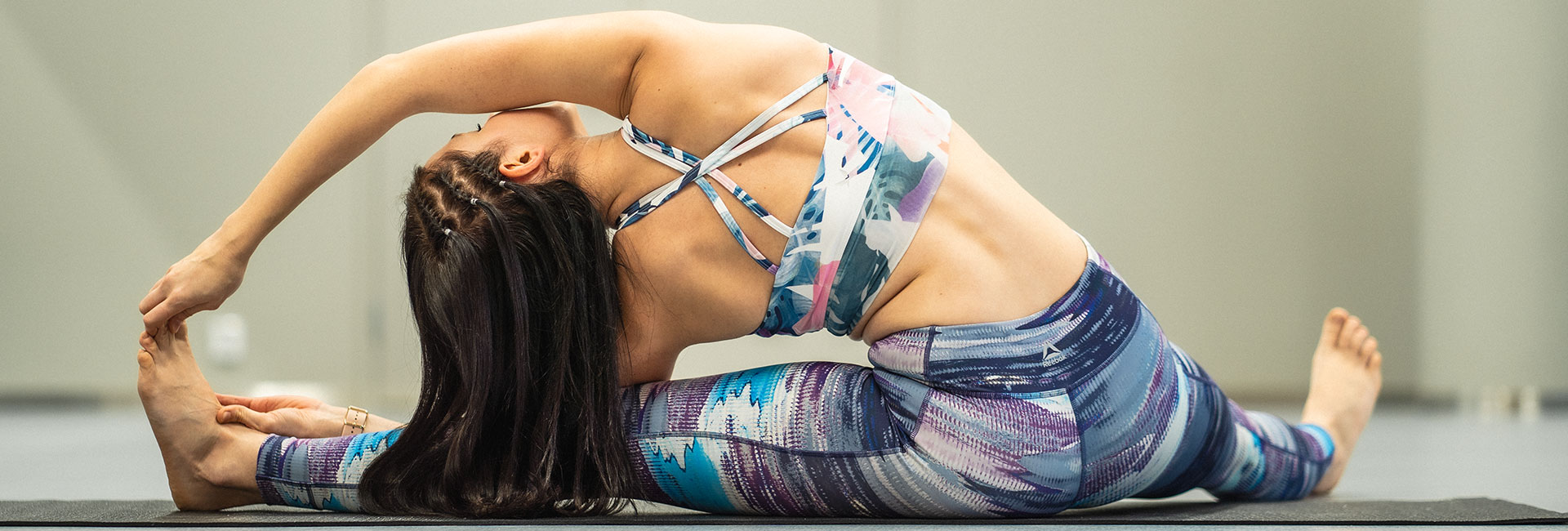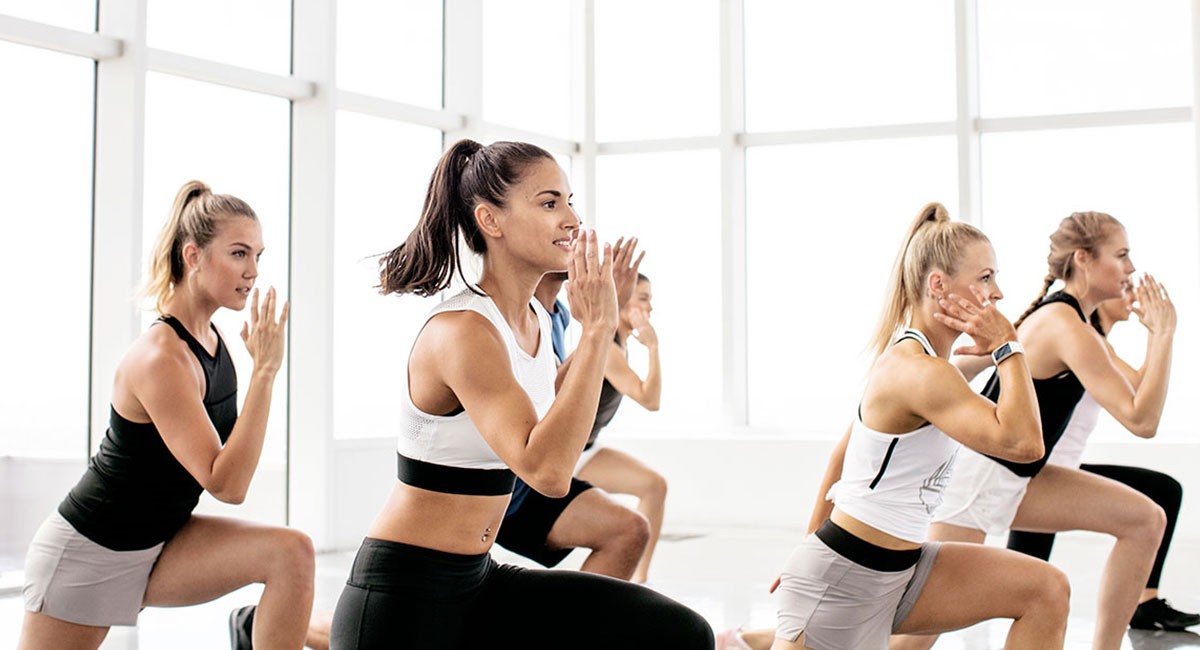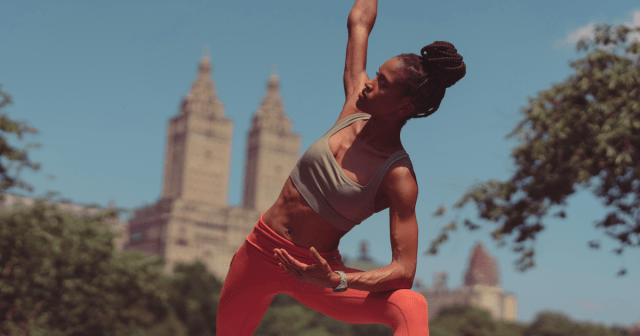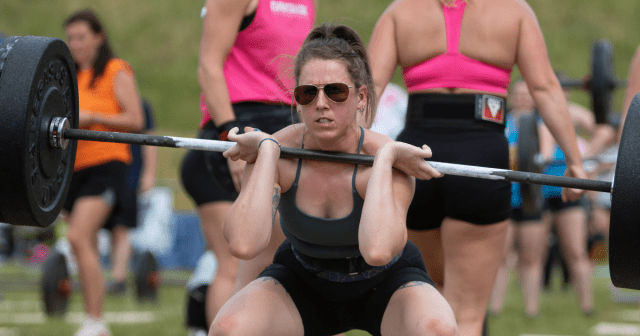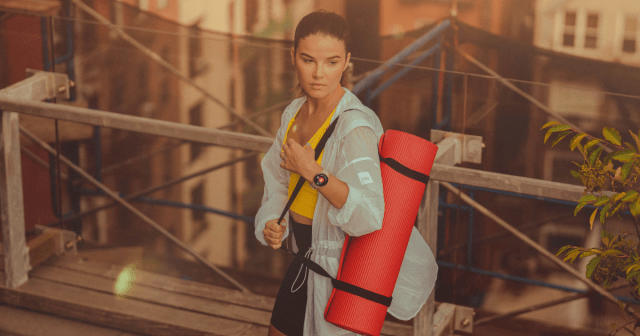Do you think yoga equals stretching? Not exactly. While it’s true that yoga improves mobility, its impact extends way beyond stretching. Yoga is an effective active recovery workout for the body and mind and can work wonders to make you a better athlete.
You’re not alone in thinking that yoga is stretching – even some fitness pros and athletes think so, too. When they hear the word yoga, some of their first thoughts and reactions are:
“I’m not flexible enough.”
“I can’t even touch my toes.”
“I’ll never be able to do that crazy-looking yoga pose I saw on Instagram.”
Well, here’s a secret. Yoga is not about the flexibility of muscles, but more about the flexibility of your mind. As an active recovery workout, it can work as therapy for both body and mind, aiding your holistic recovery.
For the next five minutes, try to put your skepticism aside and let me clue you in on how yoga can help you become a better athlete and improve your overall well-being.
Photo credits: Diyako Mohammadi
NOW, WHAT IS YOGA, REALLY?
The word yoga means union. Its main purpose is to make the body function as a whole by moving and generating good energy within. Now, it’s possible that this just raises more questions and leaves me wondering: how can energy move inside the body?
Well, definitely not by stretching in a way that tenses the muscles as this creates blockages. Instead, energy can move by enhancing blood flow in the circulatory system through the channels of the body that include blood vessels, lymphatic vessels, nerves, acupuncture meridians, and connective tissues.
As an example, just think about that painful DOMS (delayed-onset muscle soreness) you sometimes feel after a really heavy muscle training. That, for sure, is a sign of an internal blockage that restricts a smooth flow of energy.
Keep in mind that yoga is not a workout – it’s a work-in. This means that what others see from the outside isn’t relevant. It’s what you feel inside that really matters.
TRADITIONAL YOGA VS. MODERN YOGA
Today we live in the period of Modern Yoga but the history of this industry goes all the way back to ancient times. Yoga started gaining more recognition when the Indian sage, Patañjali, wrote his book Yoga Sutra that is a collection of 196 yoga statements on the theory and practice of yoga. It’s an important guide even today, as modern yogis take some of Patañjali’s writings as the base of their practice.
The book outlines the eight limbs of yoga:
- Yama (ethical principles of what we should not do)
- Niyama (ethical principles of what we should do)
- Asana (physical exercise and posture)
- Pranayama (breath control)
- Pratyahara (sensory control)
- Dharana (concentration)
- Dhyana (visualization and meditation)
- Samadhi (pure consciousness)
Even though all these eight points are important, in 2020, most people associate yoga with only the third limb, physical exercise, and posture (asana). Why is this?
Perhaps because regular physical exercise generates the most visible results, such as increased muscle strength, stamina, mobility, and balance (note: not only flexibility).
Another reason for it might be the rise of modern yoga influencers on social media channels, especially on Instagram. What Instagram users see through these influencers is only the visual part of advanced physical yoga practices and not the inner work. Therefore, many IG users have the idea that yoga is a bunch of challenging postures that only super flexible people can do.
Benefits of YOGA IN OTHER SPORTS
Even though the benefits of practicing yoga extend way beyond physical, many of the principles of yoga can be useful for athletes and exercisers.
Breath control (pranayama)
Naturally, breathing is key in all sports (and you know, just in living and staying alive in general), but especially in activities, such as running and swimming, breathing can make or break your game. If you regularly practice breathing and learn to control your breath, your performance will improve noticeably. If you’re looking for a way and If you’re a Polar Ignite or Polar Vantage user, the Serene™ guided breathing exercise can help you get started with breathing.
Visualization (dhyana)
It’s a meditative practice that calms the mind, and can also mentally prepare us for facing challenging situations. This is where sports competitions come in! According to a whitepaper by Headspace (a meditation and mindfulness app), athletes who ramp up their mental game and meditate regularly, experience elevated performance during the preparation, performance, and recovery phases, seeing positive changes like:
- Improved focus
- Better brain activity
- Increased reaction time
- Reduced overthinking
- Improved HRV
- Reduced stress
- Better pain management
- Improved sleep quality
Even though meditation is not a typical physical exercise, it has similar effects as physical movement. It positively impacts any kind of sports practice, no matter if that’s basketball, gymnastics, golf, sailing, or even esports. And since basketball got mentioned just now, here’s a short summary about how the NBA and WNBA get their head in the game with meditation exercises.
Another thing to keep in mind is that you don’t need to sit on the floor cross-legged to be able to meditate. In fact, it’s better to get comfortable sitting on a chair or lying down somewhere. This will prevent any possible muscle or joint tension from dragging your attention away from the practice.
WHEN TO CHOOSE YOGA for your ACTIVE RECOVERY workout
The answer is simple – any time. But first, let’s discuss a bit about active recovery.
According to sports scientist and Polar Fitness Ambassador, Brooke Turner, “active recovery means including low-intensity exercises that promote blood flow to the muscles, helping them to recover better and faster.”
So, on active recovery days, instead of an all-day-long Netflix marathon on the couch, you should still be active to enhance blood flow throughout your body.
During these active recovery workout sessions, you want to focus on:
- Increasing joint mobility
- Staying in the blue and green heart rate zones
- Improving cardiovascular fitness with low-intensity and low-impact exercises
- Breathing slowly and in a controlled way
- Preparing the body for the next day’s training
As a result of an active recovery session, you will feel energized, less sore, and be in a good mood for the rest of the day. Guess what? This is exactly what yoga offers, as the main purpose of it is to make energy flow freely across the channels of the body to enhance blood circulation.
If you choose to start with a physical practice, the types of modern yoga classes are endless today. They differ in many ways, such as:
- Intensity
- Pace
- Time length
- Equipment used
- Room temperature
- The language used (local or Indian Sanskrit)
- Music played
- Active/passive muscle work.
Yoga teacher tip: You can’t go wrong if you start with a flowing Vinyasa yoga class!
However, you can also dive into the less physical part of yoga, like breathing or meditation. As Brooke said, the goal of active recovery is to promote blood flow to the muscles, hence, learning and practicing effective breathing and meditation techniques (without falling asleep!) can increase blood circulation without actual physical movement.
JOIN THE YOGA MOVEMENT
It seems that yoga isn’t a passing fitness fad either. According to Google Trends, the interest in yoga has been steadily growing for the past 10 years and the trend continues.
That’s right. If you’re intrigued by yoga, you’re not alone and even if you don’t have any experience in yoga, yet, there are others in the same boat. To get started with yoga, you don’t need to be supernaturally flexible or a zen master – all you need is to start. Why wait? Start building and maintaining strong physical and mental fitness with yoga – today!
Could 2020 be the year you try a new approach and reach your full potential?
If you liked this post, don’t forget to share so that others can find it, too.
Or give it a thumbs up!
I like this article
Please note that the information provided in the Polar Blog articles cannot replace individual advice from health professionals. Please consult your physician before starting a new fitness program.
